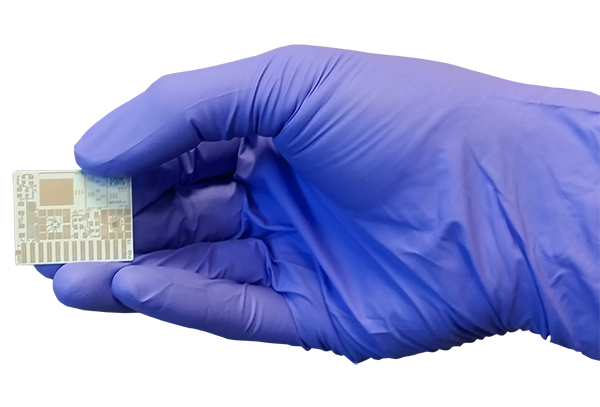
Earth’s Twin Helps with Extreme Electronics
Subheadline
Plans to explore Venus give rise to new computer chips for high-heat conditions on Earth
Venus and Earth, often called twins for their comparable size and density, have something else in common – extreme heat. Exploring our closest planetary neighbor will require technology for a corrosive, high-pressure atmosphere and surface temperatures around 900°F. Geothermal engineers tapping heat deep within the earth as a renewable energy source encounter similarly punishing temperatures. Both need compact, rugged electronics to power sensors and collect data without a bulky cooling system. All-in-one, single-board electronics modules that benefited from NASA expertise now offer that capability on this planet.
To support missions to the surface of Venus and elsewhere, NASA’s Glenn Research Center in Cleveland is developing extreme-temperature integrated circuit technology. Ozark Integrated Circuits Inc. (Ozark IC) of Fayetteville, Arkansas, has built on this work with the help of several NASA Small Business Innovation Research contracts, about half of which came from Glenn. The work helped Ozark IC create a new product line including durable electronic packaging systems.
On a spacecraft or planetary lander, environmental controls to cool electronics take up space and add mass. By removing that cooling requirement, engineers can free up room for more scientific payloads and use less energy. As an alternative to conventional electronics made from silicon, which can only function below about 400°F, Glenn makes integrated circuits with silicon carbide, a semiconductor material that functions in temperatures up to 900°F.
“An integrated and reliable chain of technologies, from the semiconductor to the integrated circuit and the multi-chip board and its physical and electrical connections, is essential,” said Philip Neudeck, researcher at Glenn. The work with NASA to achieve this contributed to Ozark IC’s understanding of how to better employ high-temperature semiconductor technology and 3D printing techniques to fabricate sensors and create durable packaging for other electronics.
The company recognized an opportunity to support multiple industries on Earth. Here, applications for high-temperature integrated circuits include monitoring and optimizing jet engine performance, underground exploration for drilling well sites, and molten salt nuclear reactors, to name a few. Other electronics in these environments haven’t fared well.
Ozark IC collaborated with Glenn to develop the company’s eXtreme Nodes – or XNodes – compact, lightweight, rugged electronics that can be used off the shelf or customized for specific needs. Each has one or more integrated functions for extreme environments.
“We can put digital electronics where we haven’t been able to before,” said Ian Getreu, business development director for Ozark IC. “A piece of equipment that had one sensor can now have 10.” Where others would have to put an analog sensor in a hot engine, for example, and connect it to digital electronics away from the heat, an XNode can feed data directly from an extreme environment to computer controls that automatically adjust settings to improve performance.
Founded in 2011 as a one-person company, Ozark IC now employs over 20 people and is developing a new product line based on technology licensed from the agency to introduce even higher-temperature electronics for the commercial sector.
“A lot of the NASA work has been done for Venus,” said Getreu, “and we’ve learned things we can apply to current commercial offerings. Using 3D printing, we can apply things we learned to different materials.”

Utilizing NASA expertise, SBIR funding, and 3D printing, Ozark Integrated Circuits created a single-board computer module that withstands extreme heat and doesn’t require a bulky cooling system. This makes it possible to embed sensors and electronics in geothermal drilling equipment, jet engines, and other Earth applications. Credit: Ozark Integrated Circuits Inc.

This composite view of Venus shows the surface of the planet, where temperatures are around 900°F. If future NASA missions to land a craft on the planet are to succeed, electronics must survive the heat. Ozark Integrated Circuits is making some of that technology available on Earth. Credit: NASA













